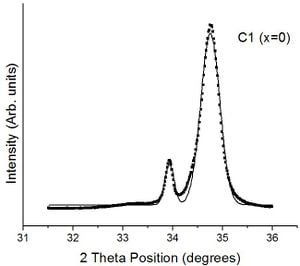Introduction

W (XRD) is a material characterization technique that can be useful for analyzing the lattice structure of a material. The basic principle behind XRD is Bragg’s Law of diffraction. By emitting x-rays at a sample and measuring the reflections and angles at which the reflections occur at, many different types of information can be obtained. Lattice parameters, texture orientations, and crystal structures can all be directly obtained from XRD. Often XRD is used for chemical analysis and a database exists of XRD scans of many types of materials for comparison. The database can be used to check a material’s XRD ‘fingerprint’ pattern to determine the composition. There are several different types of scans and subsections of XRD such as power diffraction, theta-2theta scans, reciprocal space mapping, and x-ray rocking curve scans.
At Queen’s University, several XRD machines exist around campus, including two in the basement of Jackson Hall (including a rotating anode XRD) and a Phillip’s X’pert XRD machine on the 5th floor of Stirling Hall. This rest of this article will pertain specifically to the XRD machine in Stirling Hall.
General Use Protocol and Tips
- Safety
- Permission for use
- Scan times/batch scans
- Optics
- Booking information
For all booking information, rates and schedules, please see the Materials Physics cleanroom page.
<layout name="Howtos" />